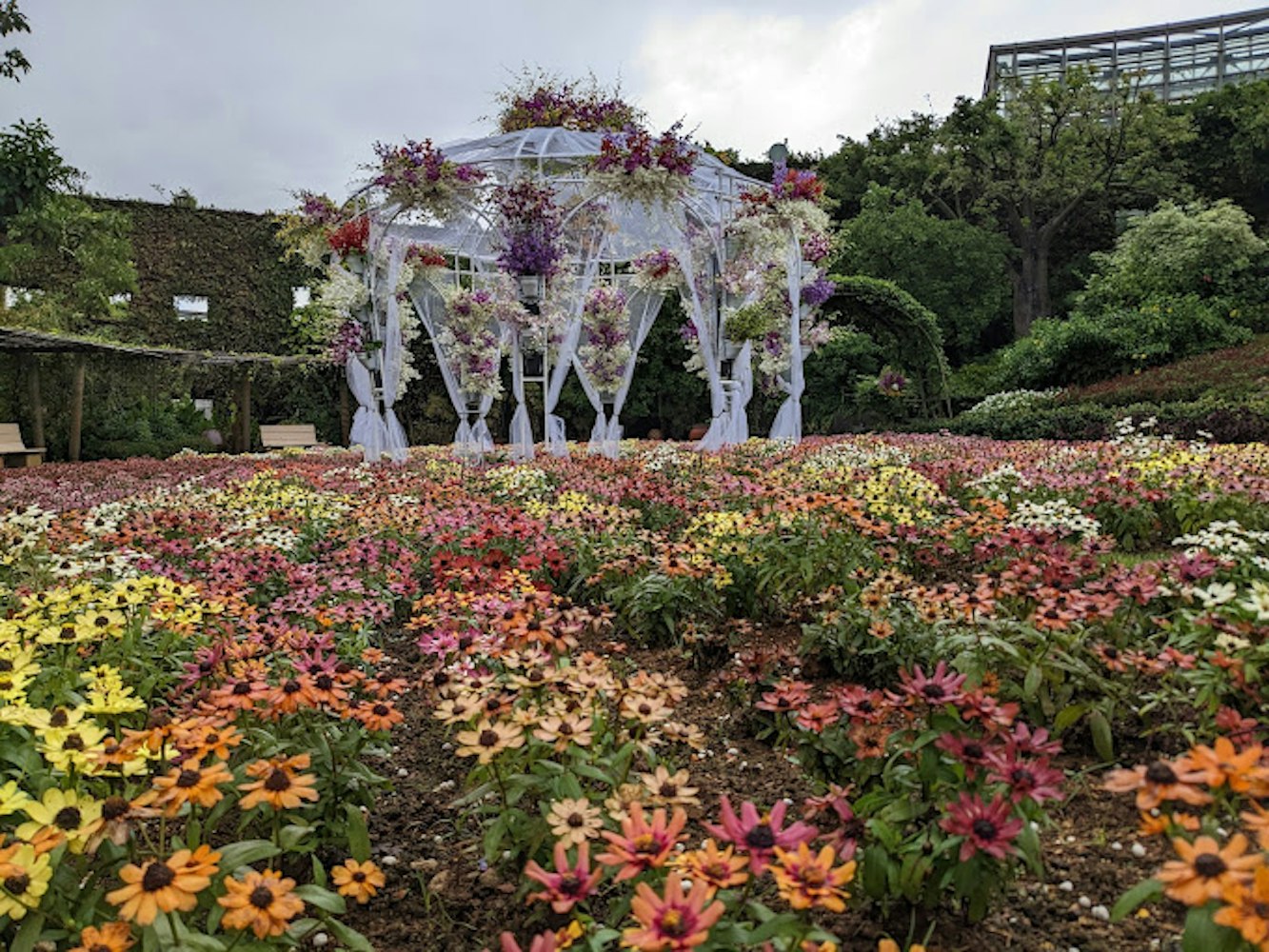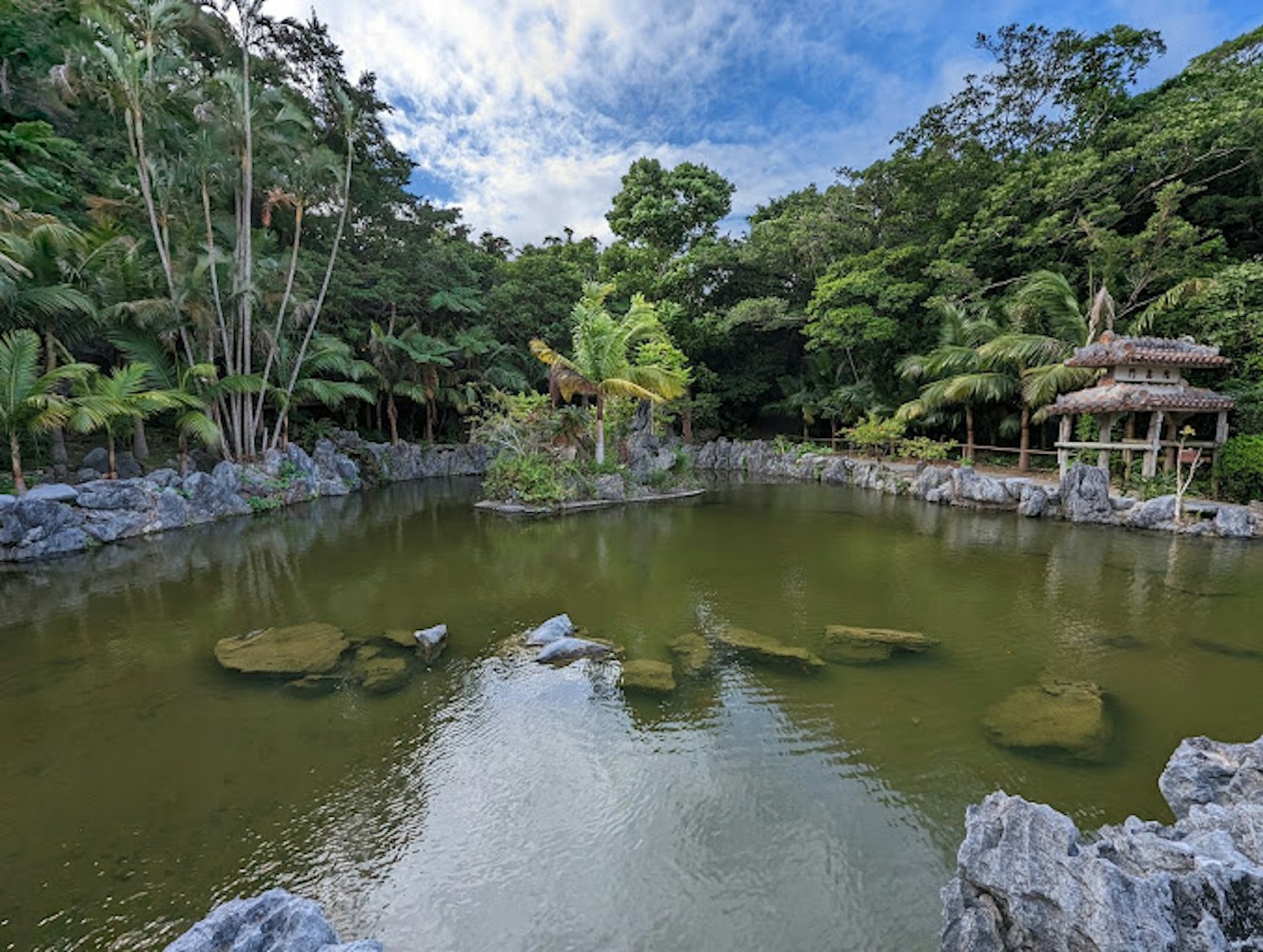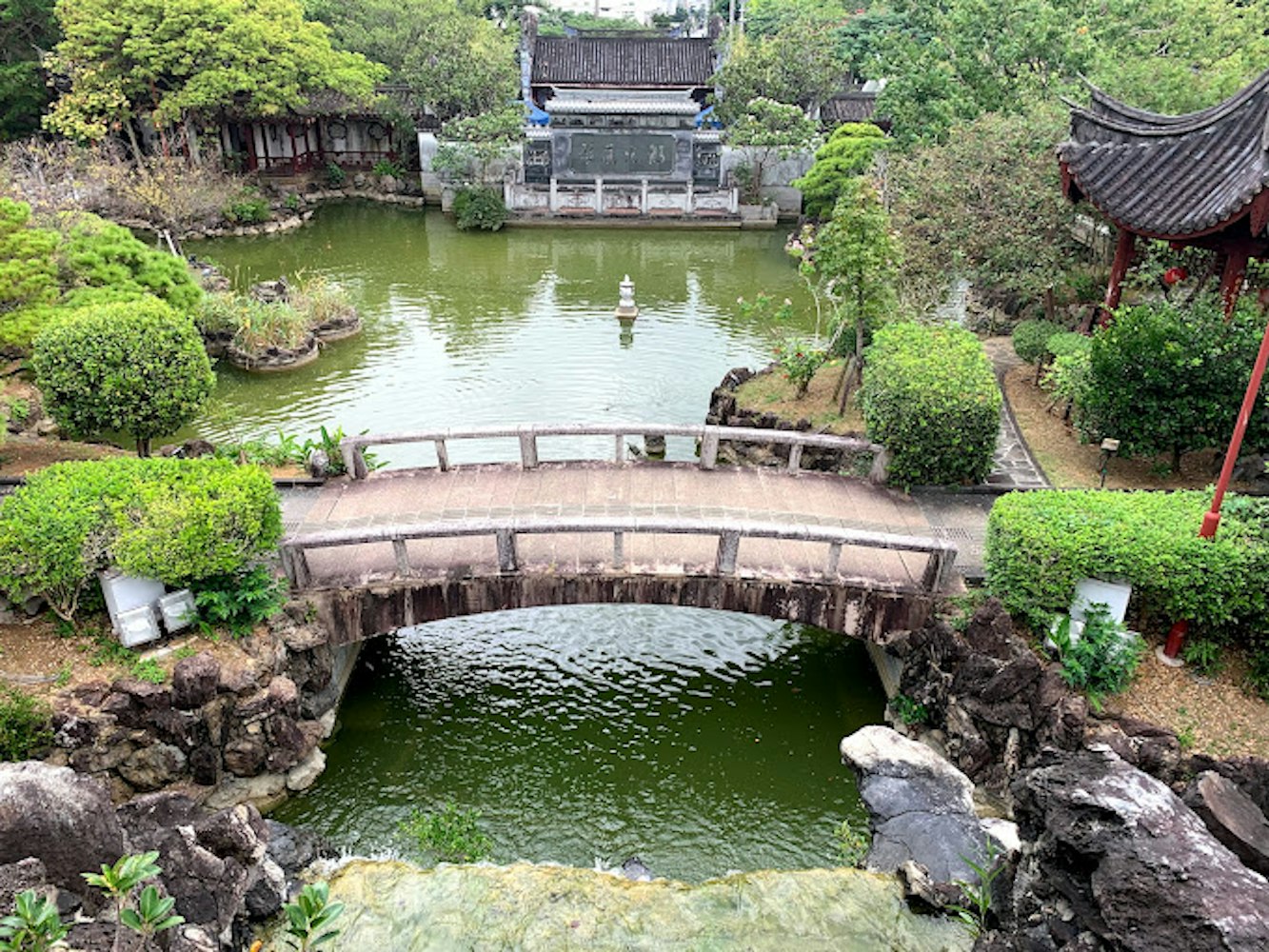

สวนพฤกษศาสตร์ในโอกินาว่าเสนอภาพรวมให้เห็นถึงระบบนิเวศที่อุดมสมบูรณ์และหลากหลายของเกาะ รวมถึงมรดกทางวัฒนธรรม สวนเหล่านี้มีความสำคัญต่อการอนุรักษ์พืชพันธุ์ที่หายากและเฉพาะถิ่น โดยหลายแห่งทำหน้าที่เป็นศูนย์วิจัยที่มุ่งเน้นพืชพรรณในเขตร้อนชื้น
สวนแต่ละแห่งในรายการของเรามีประสบการณ์ที่ไม่เหมือนใคร ตั้งแต่ภูมิทัศน์กว้างใหญ่ของ สวนพฤกษศาสตร์โอกินาว่าจุระอุ ไปจนถึงความสงบแบบประวัติศาสตร์ของสวนชิกินะเอน การเยี่ยมชมสถานที่เหล่านี้ทำให้คุณได้สำรวจความงามของพืชพรรณในโอกินาว่าและเรียนรู้เกี่ยวกับความพยายามในการอนุรักษ์มัน หากคุณเข้าร่วมกับเราในการสำรวจสวนพฤกษศาสตร์ที่ดีที่สุด 8 แห่งในโอกินาว่า ซึ่งเหมาะสำหรับวันแห่งการพักผ่อนและการค้นพบ

สวนพฤกษศาสตร์โอกินาว่าจุระอุ ตั้งอยู่ภายใน อุทยานเอ็กซ์โปมหาสมุทร เป็นที่รู้จักในด้านการเก็บรวบรวมพืชพรรณเขตร้อนและกึ่งเขตร้อนที่หลากหลาย สวนนี้มีบทบาทสำคัญในการอนุรักษ์และศึกษาความหลากหลายทางชีวภาพทั้งในทะเลและบนบกซึ่งเป็นของโอกินาว่า
หนึ่งในคุณลักษณะเด่นของมันคือศูนย์ความฝันเขตร้อน ซึ่งมีกล้วยไม้มากกว่า 2,000 สายพันธุ์พร้อมด้วยพืชชนิดอื่น ๆ อีกมากมาย ความพยายามของสวนในการศึกษาเชิงนิเวศและการจัดแสดงดอกไม้ที่น่าประทับใจทำให้มันเป็นสถานที่ที่ต้องไปเยือนสำหรับทั้งคนรักธรรมชาติและนักวิจัย
วิธีไปที่นั่น: จากนาฮะ ให้ขึ้นรถบัสยานบูระตรงไปยังอุทยานเอ็กซ์โปมหาสมุทร หรือขับรถประมาณ 1.5 ชั่วโมงผ่านทางด่วนโอกินาว่า

สำรวจชายฝั่งตะวันตกที่น่าทึ่งของโอกินาว่าไปกับทัวร์รถบัสชมทิวทัศน์ระดับวีไอพีของเรา

สวนพฤกษศาสตร์ตอนใต้ นำเสนอภาพรวมที่ครอบคลุมเกี่ยวกับความหลากหลายของพฤกษศาสตร์ด้วยการเก็บรวบรวมพืชพันธุ์กว่า 1,300 สายพันธุ์จากทั่วโลก สวนเหล่านี้มีเอกลักษณ์ด้วยการรวมภูมิทัศน์ทางน้ำและชายฝั่ง สร้างสภาพแวดล้อมที่น่าสนใจสำหรับผู้มาเยือนสวนที่มีน้ำเป็นที่โดดเด่น มีระบบบ่อน้ำและน้ำตกที่ซับซ้อนซึ่งสนับสนุนพืชน้ำที่หลากหลาย นอกจากนี้ สวนยังจัดกิจกรรมทางวัฒนธรรมและการศึกษา ทำให้เป็นสถานที่ที่มีพลศาสตร์ในการเรียนรู้เกี่ยวกับพฤกษศาสตร์และสิ่งแวดล้อม
วิธีไปที่นั่น:
ตั้งอยู่ในเมืองโอกินาว่า เข้าถึงได้โดยรถยนต์ในเวลาประมาณ 30 นาทีจากนาฮะ ตัวเลือกการขนส่งสาธารณะรวมถึงรถบัสที่หยุดที่สถานีรถบัสใกล้เคียง ซึ่งจากนั้นคุณสามารถเดินหรือใช้บริการแท็กซี่ระยะสั้น

สวนชิกินะเอน ถูกสร้างขึ้นในปลายศตวรรษที่ 18 เป็นวิลล่าสำหรับกษัตริย์แห่งริวกิว และในปัจจุบันได้รับการยอมรับว่าเป็นมรดกโลกของยูเนสโก การออกแบบของสวนรวมเอกลักษณ์ของสถาปัตยกรรมภูมิทัศน์ญี่ปุ่นและจีน ซึ่งสะท้อนถึงอิทธิพลทางประวัติศาสตร์ต่อโอกินาว่าสวนมีชื่อเสียงในเส้นทางเดินวนรอบที่เน้นรอบบ่อน้ำขนาดใหญ่ ซึ่งเป็นลักษณะคลาสสิกของสวนหลวงในเอเชียตะวันออก รูปแบบที่เงียบสงบนี้ไม่เพียงแค่ให้พื้นที่พักผ่อนแก่ราชวงศ์ แต่ยังทำหน้าที่เป็นสถานที่สำหรับการเจรจาด้วย การเยี่ยมชมชิกินะเอนช่วยให้คุณได้เห็นภาพชีวิตในประวัติศาสตร์ของราชวงศ์ริวกิวและการมีส่วนร่วมกับสิ่งแวดล้อมธรรมชาติ
วิธีไปที่นั่น:
จากใจกลางนาฮะ ให้ขึ้นโมโนเรลเมืองโอกินาว่า (ยูอิเรล) ไปยังสถานีชูริ จากนั้นเดินประมาณ 20 นาทีหรือใช้บริการแท็กซี่ 5 นาทีไปยังสวนสวนสมุนไพรริวกิวมุระ

สวนสมุนไพรริวกิวมุระ เป็นส่วนหนึ่งของสวนวัฒนธรรมขนาดใหญ่ที่ออกแบบมาเพื่ออนุรักษ์และส่งเสริมประเพณีของหมู่เกาะริวกิว สวนนี้มีความเชี่ยวชาญในการปลูกสมุนไพรที่เป็นของโอกินาว่า ซึ่งถูกใช้เพื่อคุณสมบัติในการรักษาโดยหมอพื้นบ้านมาเป็นเวลาหลายชั่วอายุคน ผู้เข้าชมสามารถเรียนรู้เกี่ยวกับการใช้สมุนไพรเหล่านี้ในด้านการรักษาและด้านการทำอาหารสวนมีการจัดเวิร์กชอปและการมีส่วนร่วมทางปฏิบัติที่ให้แขกมีส่วนร่วมโดยตรงกับพืช เรียนรู้วิธีเก็บเกี่ยวและใช้ในยาสมุนไพรแบบดั้งเดิมและสูตรอาหาร ซึ่งให้ความเข้าใจเชิงลึกเกี่ยวกับมรดกทางพฤกษศาสตร์ของโอกินาว่า
วิธีไปที่นั่น:
สวนนี้เข้าถึงได้ง่ายโดยรถยนต์ ใช้เวลาประมาณ 1 ชั่วโมงจากนาฮะ นอกจากนี้ยังมีรถบัสท้องถิ่นบริการในบริเวณนี้ โดยออกจากจุดกลางในนาฮะ โดยมีจุดหยุดใกล้ริวกิวมุระ

ดื่มด่ำไปกับอาณาจักรที่มีเสน่ห์ของโอกินาว่ากับทัวร์นี้

ไบออสออนเดอะฮิลล์ เป็นสวนเชิงนิเวศที่ไม่เหมือนใคร ตั้งอยู่ในเนินเขาของโอกินาว่า เพื่อให้สภาพแวดล้อมทางธรรมชาติที่หลากหลายที่ส่งเสริมการสำรวจและการศึกษา สวนนี้มีความโดดเด่นด้วยระบบนิเวศป่าชายเลนและป่าเขตร้อนที่อุดมสมบูรณ์ สนับสนุนสัตว์ป่าหลายชนิดผู้เข้าชมสามารถสำรวจสวนนี้ได้ผ่านเส้นทางเดินหรือล่องเรือ ซึ่งให้ประสบการณ์แวดล้อมทางธรรมชาติที่ดื่มด่ำ ไบออสออนเดอะฮิลล์ยังทุ่มเทให้กับการศึกษาเกี่ยวกับสิ่งแวดล้อม มีการเสนอโปรแกรมที่ให้ความรู้แก่ผู้เข้าชมเกี่ยวกับแนวทางปฏิบัติที่ยั่งยืนและความสำคัญของการอนุรักษ์ความหลากหลายทางชีวภาพ ทำให้มันเป็นแหล่งข้อมูลที่สำคัญสำหรับการเรียนรู้ทางนิเวศวิทยา
วิธีไปที่นั่น:
จากนาฮะ ให้ขับรถไปทางเหนือบนทางด่วนโอกินาว่าไปยังทางออกอิชิกาวะ จากนั้นตามถนนท้องถิ่นไปยังสวน ใช้เวลาขับรถประมาณ 50 นาที รถบัสสาธารณะยังมีให้บริการจากใจกลางนาฮะถึงจุดที่ใกล้กับไบออสออนเดอะฮิลล์ศูนย์ความฝันเขตร้อน

อุทยานเอ็กซ์โปมหาสมุทร ศูนย์ความฝันเขตร้อนเป็นความมหัศจรรย์ทางพฤกษศาสตร์ที่มีการจัดเก็บกล้วยไม้กว่า 2,000 สายพันธุ์ในบรรดาคอลเลกชันพืชเขตร้อนและกึ่งเขตร้อนมากกว่า 1,000 ชนิด คอมเพล็กซ์เรือนกระจกนี้ออกแบบมาเพื่อแสดงความหลากหลายของพืชในโดมหลักสามแห่ง ซึ่งแต่ละโดมสร้างสภาพแวดล้อมภูมิอากาศที่แตกต่างกันที่เหมาะกับกลุ่มพืชต่างๆจากพืชปาล์มหายากไปยังต้นไม้ที่ให้ผลไม้และดอกไม้ที่มีกลิ่นหอม คอลเลกชันที่กว้างขวางของศูนย์นี้เน้นย้ำถึงกลยุทธ์การปรับตัวของพืชต่อภูมิอากาศเขตร้อน ศูนย์ความฝันเขตร้อนไม่เพียงแต่ทำหน้าที่เป็นสวนพฤกษศาสตร์ แต่ยังเป็นสถานที่วิจัยและการศึกษา ส่งเสริมความเข้าใจและการอนุรักษ์ชีวิตพืชเขตร้อน
วิธีไปที่นั่น:
ตั้งอยู่ภายในอุทยานเอ็กซ์โปมหาสมุทร พร้อมกับพิพิธภัณฑ์สัตว์น้ำโอกินาว่าจุระอุ เข้าถึงได้ง่ายที่สุดโดยรถบัสยานบูระจากนาฮะหรือขับรถผ่านทางด่วนโอกินาว่า

สวนจีนฟุกชูเอ็น ยืนหยัดเป็นสัญลักษณ์ของความสัมพันธ์ทางวัฒนธรรมที่ยาวนานระหว่างโอกินาว่าและจีน สร้างขึ้นเพื่อสะท้อนถึงมิตรภาพระหว่างเมืองนาฮะและเมืองฟูโจว ประเทศจีน สวนนี้ถูกออกแบบตามหลักการจัดภูมิทัศน์แบบจีนดั้งเดิม สร้างขึ้นจากวัสดุและองค์ประกอบทางสถาปัตยกรรมที่แท้จริงซึ่งนำเข้าจากฟูโจว รวมถึงการแกะสลักหินที่สลับซับซ้อนและศาลาจีนแบบดั้งเดิมรูปแบบรวมถึงบ่อปลาคาร์พและพืชพรรณจีนหลากหลายชนิดที่บูรณาการอย่างกลมกลืนกับพืชพื้นเมืองของโอกินาว่า ฟุกชูเอ็นไม่เพียงแต่เป็นสถานที่สำหรับการพักผ่อนและเพลิดเพลินกับธรรมชาติ แต่ยังทำหน้าที่เป็นสะพานทางวัฒนธรรม โดยจัดงานเทศกาลจีนและกิจกรรมทางวัฒนธรรมต่างๆ ที่เสริมสร้างความสัมพันธ์ระหว่างสองภูมิภาค
วิธีไปที่นั่น:
สวนนี้ตั้งอยู่ในเขตคุเมะ ของนาฮะ เข้าถึงได้ง่ายโดยเดินจากสถานีเคนโชมาเอะบนยูอิเรลหรือเดิน 10 นาทีจากสถานีขนส่งนาฮะสวนโยเฮนะอาจิไซ

สำรวจโอกินาวะในแบบของคุณด้วยทัวร์ส่วนตัวที่สร้างขึ้นเพื่อตอบสนองความต้องการของคุณโดยเฉพาะ

สวนมีพืชไฮเดรนเยียมากกว่า 30,000 ต้น ทำให้เป็นหนึ่งในคอลเลกชันขนาดใหญ่ที่สุดในญี่ปุ่น ผู้เข้าชมที่
สวนโยเฮนะอาจิไซ สามารถเดินเล่นไปตามเส้นทางที่มีสีสัน เพลิดเพลินกับทิวทัศน์ที่สวยงาม และเรียนรู้เกี่ยวกับการปลูกและดูแลไฮเดรนเยีย ความสำเร็จของสวนนี้เป็นเครื่องยืนยันถึงความทุ่มเทของผู้ก่อตั้ง และเสนอประสบการณ์ที่ไม่เหมือนใครในการเข้าไปในโลกของดอกไม้ที่น่าทึ่งเหล่านี้วิธีไปที่นั่น:
ตั้งอยู่ทางตอนเหนือของโอกินาว่า วิธีที่ดีที่สุดในการเข้าถึงสวนคือการขับรถจากนาฮะ ใช้เวลาขับรถประมาณ 1.5 ชั่วโมง การขนส่งสาธารณะมีความซับซ้อนน้อยกว่า แต่สามารถใช้รถบัสที่มุ่งหน้าไปยังสถานีขนส่งนางะจากนาฮะ ตามด้วยการนั่งแท็กซี่จากนางะไปยังสวนความคิดสุดท้ายเกี่ยวกับศักยภาพสีเขียวของโอกินาว่า
โอกินาว่า เสนอมากกว่าการเดินท่ามกลางพืชที่สวยงาม ทุกสวนคือเส้นทางสู่การเข้าใจมรดกพฤกษศาสตร์ที่ร่ำรวยของโอกินาว่าและความมุ่งมั่นในการอนุรักษ์ธรรมชาติไม่ว่าคุณจะเรียนรู้เกี่ยวกับการแพทย์แบบดั้งเดิมของริวกิวที่สวนสมุนไพรริวกิวมุระ ประสบการณ์เกี่ยวกับความสัมพันธ์ทางประวัติศาสตร์ในสวนจีนฟุกชูเอ็น หรือชิมพันธุ์สับปะรดต่าง ๆ ที่นากโกะ ไพเนิลปาร์ค สวนเหล่านี้ให้ความเข้าใจที่ไม่เหมือนใครเกี่ยวกับสิ่งแวดล้อมและวัฒนธรรมของเกาะ
Whether you're learning about traditional Ryukyu medicine at the Ryukyu Mura Herb Garden, experiencing the historical ties in the Fukushu-en Chinese Garden, or tasting different pineapple varieties at Nago Pineapple Park, these gardens provide unique insights into the environmental and cultural fabric of the island.



